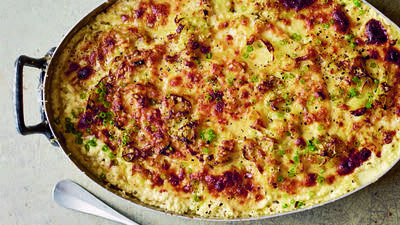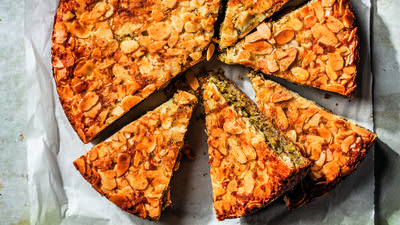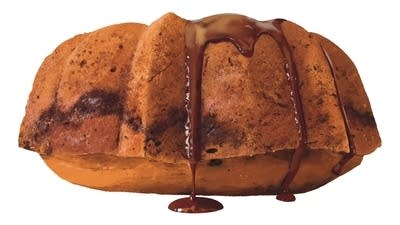
We wanted our baklava recipe to produce crisp, flaky, buttery lozenges, light yet rich, filled with fragrant nuts and spices, and sweetened just assertively enough to pair with a Turkish coffee. To achieve this goal, we sprinkled store-bought phyllo dough with three separate layers of nuts (pistachios) flavored with cardamom. We clarified the butter for even browning. We found that cutting the baklava rather than just scoring it before baking helped it absorb the sugar syrup. Finally, allowing the baklava to sit overnight before serving improved its flavor of our baklava recipe and was worth the wait.
Ingredients
Sugar Syrup
1 3/4 cups granulated sugar
3/4 cup water
1 tablespoon lemon juice from 1 lemon
10 black peppercorns 1/8 teaspoon table salt
1 tablespoon rosewater
Nut Filling
12 ounces shelled pistachios, raw
1 teaspoon ground cardamom
2 tablespoons granulated sugar
teaspoon table salt
Pastry and Butter
1 1/2 cups unsalted butter (3 sticks), clarified per instructions below, melted, and cooled slightly (about 1 cup)
1 pound frozen phyllo thawed (see note)
Directions
A straight-sided traditional (not nonstick) metal baking pan works best for making baklava; the straight sides ensure that the pieces will have nicely shaped edges, and the surface of a traditional pan will not be marred by the knife during cutting, as would a nonstick surface. If you don’t have this type of pan, a glass baking dish will work. Make sure that the phyllo is fully thawed before use; leave it in the refrigerator overnight or on the countertop for four to five hours. When assembling, use the nicest, most intact phyllo sheets for the bottom and top layers; use sheets with tears or ones that are smaller than the size of the pan in the middle layers, where their imperfections will go unnoticed. If, after assembly, you have remaining clarified butter, store it in an airtight container in the refrigerator; it can be used for sautéing.
1. For the sugar syrup: Combine syrup ingredients, except rosewater, in small saucepan and bring to full boil over medium-high heat, stirring occasionally to ensure that sugar dissolves. Transfer to 2-cup measuring cup and set aside to cool while making and baking baklava; when syrup is cool, discard peppercorns and stir in rosewater. (Cooled syrup can be refrigerated in airtight container up to 4 days.)
2. For the nut filling: Pulse pistachios in food processor until very finely chopped, about fifteen 1-second pulses; transfer to bowl. Measure out 1 tablespoon nuts and set aside for garnish. Add ground cardamom, sugar, and salt; toss well to combine.
3. To assemble and bake: Brush 13- by 9-inch traditional (not nonstick) baking pan with butter. Adjust oven rack to lower-middle position and heat oven to 300 degrees. Unwrap and unfold phyllo on large cutting board; carefully smooth with hands to flatten. Using baking pan as guide, cut sheets crosswise with chef’s knife, yielding two roughly evenly sized stacks of phyllo (one may be narrower than other). Cover with plastic wrap, then damp kitchen towel to prevent drying.
4. Place one phyllo sheet (from wider stack) in bottom of baking pan and brush until completely coated with butter. Repeat with 7 more phyllo sheets (from wider stack), brushing each with butter.
5. Evenly distribute about 1 cup nuts over phyllo. Cover nuts with phyllo sheet (from narrower stack) and dab with butter (phyllo will slip if butter is brushed on). Repeat with 5 more phyllo sheets (from narrower stack), staggering sheets slightly if necessary to cover nuts, and brushing each with butter. Repeat layering with additional 1 cup nuts, 6 sheets phyllo, and remaining 1 cup nuts. Finish with 8 to 10 sheets phyllo (from wider stack), using nicest and most intact sheets for uppermost layers and brushing each except final sheet with butter. Use palms of hands to compress layers, working from center outward to press out any air pockets. Spoon 4 tablespoons butter on top layer and brush to cover all surfaces. Use bread knife or other serrated knife with pointed tip in gentle sawing motion to cut baklava into diamonds, rotating pan as necessary to complete cuts. (Cut on bias into eighths on both diagonals.)
6. Bake until golden and crisped, about 1 1/2 hours, rotating baking pan halfway through baking. Immediately after removing baklava from oven, pour cooled syrup over cut lines until about 2 tablespoons remain (syrup will sizzle when it hits hot pan); drizzle remaining syrup over surface. Garnish center of each piece with pinch of reserved ground nuts. Cool to room temperature on wire rack, about 3 hours, then cover with foil and let stand at least 8 hours before serving. (Once cooled, baklava can be served, but flavor and texture improve if left to stand at least 8 hours. Baklava can be wrapped tightly in foil and kept at room temperature up to 10 days.)
Clarifying butter:
1. Let melted butter settle for 10 minutes. With soup spoon, carefully skim off foam from surface.
2. Spoon butterfat into small cup, tipping saucepan gently and only when it becomes necessary.
3. Make sure to leave water and milk solids behind in saucepan so they can be discarded.
Copyright 2019 America's Test Kitchen
Before you go...
Each week, The Splendid Table brings you stories that expand your world view, inspire you to try something new, and show how food connects us all. We rely on your generous support. For as little as $5 a month, you can have a lasting impact on The Splendid Table. And, when you donate, you’ll join a community of like-minded individuals who love good food, good conversation, and kitchen companionship. Show your love for The Splendid Table with a gift today.
Thank you for your support.
Donate today for as little as $5.00 a month. Your gift only takes a few minutes and has a lasting impact on The Splendid Table and you'll be welcomed into The Splendid Table Co-op.




